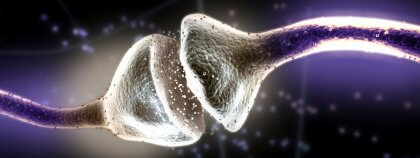 Larry Barnett lives in Sonoma where he was elected to three terms on the City Council and served twice as Mayor. A thirty-three-year resident, he currently serves as Chair of Sonoma's Planning Commission. He has been married for 48 years, has two daughters and three grandchildren.
Larry Barnett lives in Sonoma where he was elected to three terms on the City Council and served twice as Mayor. A thirty-three-year resident, he currently serves as Chair of Sonoma's Planning Commission. He has been married for 48 years, has two daughters and three grandchildren.
Biochemical me

Is the self physical or metaphysical? That is the question. The nature of self is hotly debated. Buddhist non-materialists consider the self to be a sustained hallucination, an opinion supported by some current-day neurologists who, despite all their attempts, cannot find a source of the self. Some theoretical physicists speculate that human consciousness is a non-local phenomenon, a product of quantum entanglement not altogether different than the Ancient Greek conception about thoughts and feelings being imparted to us by the gods.
The mystic philosopher and writer G.I. Gurdjieff opined, “Life is real only then, when I am.” On this he seemed to agree with Rene Descartes, who famously declared “Cogito ergo sum,” “I think, therefore I am.” It’s a premise that’s so obvious that to question it otherwise is nearly unthinkable. Think about that.
On the material plane, there seems to be consensus that in order to think, i.e. to be “I am,” a brain is required, and that the reality of “I” is dependent upon the physical substance of our biological selves. Of what, however, is the “I” composed? The answer appears to be memory, both short- and long-term. And memory, research now indicates, is biochemical, in other words, dependent upon physical matter.
Set aside, for the moment, that all material objects are what Buddhists recognize as densely packed space, and what physicists identify as quantum fields and forces that assume a coherent, if impermanent, stability that our senses interpret as “solid.” Subjective memory is biochemical information generated in synapses and stored within the physical structures of the brain. As new memories are formed, neuronal dendrites develop networked connections to other neurons.
With an estimated 86 billion neurons comprising 100 trillion dendritic connections (see image), a number far greater in size than all the visible stars in the Milky Way, the human brain and its capacities are unfathomable. Neuroscientist Karl Pribram suggests that the human brain functions holographically, constructing sensory-influenced, multidimensional “maps” of the external world through which it can then navigate. Much of this happens within the cerebral cortex, the convoluted, crenelated structure that occupies the outermost layer of the brain.
The known facts of brain structure do not take us off the horns of a dilemma about self, however; rather, we find ourselves on the horns of the Hippocampus, an ancient C-shaped structure found deeply within the brain. Appropriately, the Hippocampus’ name is derived from the Ancient Greek word for a horned sea-monster, an oddly appropriate designation for the structure where both memory and emotion are regulated, written, and erased among the 100 trillion dendritic addresses of the brain.
It is in the Hippocampus where a variety of chemical precursors and agents combine with neurons and determine how, when, and where memories are stored. Damage to the Hippocampus is associated with changes in personality, forms of dementia, amnesia, and selective memory loss. This furthers the idea that the “self” is material; injury to the physical structure of the brain changes the nature of self.
Because internal thoughts are not objectively visible but are nonetheless felt, the idea that thoughts are not physical but instead are metaphysical has been a persistent belief. Recent brain/machine interfaces indicate otherwise. Technology is rapidly advancing to the point where thoughts can be “read” by software, much as our minds can read words in a book.
And yet, whatever the physical limitations of self, our thoughts and feelings are free and unconfined. There’s something metaphysical about that.
One thought on “Biochemical me”
Comments are closed.







Are we humans stuck in binary thinking of the either-or phenomena? Is the either-or a rebellious trap, a conditioning of this current era, or merely a habit formation?
Why can’t the self be both physical and metaphysical? If we can accept the disparities of the physical and the spiritual then perhaps transcendence may be in the offing?